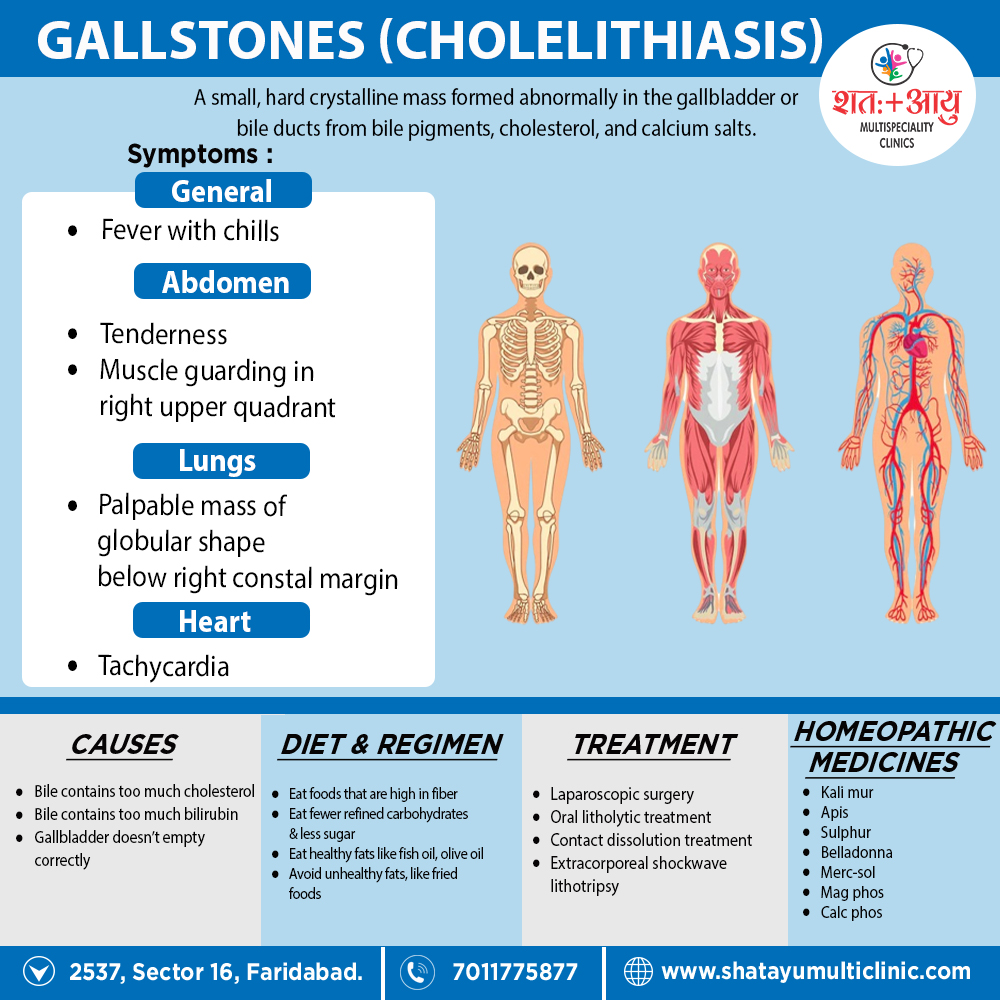Homeopathic Treatment of Cholelithiasis
Homeopathy treats the person as a whole. It means that homeopathic treatment focuses on the patient as a person, as well as his pathological condition. The homeopathic medicines selected after a full individualizing examination and case-analysis.
Which includes
- The medical history of the patient,
- Physical and mental constitution,
- Family history,
- Presenting symptoms,
- Underlying pathology,
- Possible causative factors etc.
A miasmatic tendency (predisposition/susceptibility) also often taken into account for the treatment of chronic conditions.
What Homoeopathic doctors do?
A homeopathy doctor tries to treat more than just the presenting symptoms. The focus is usually on what caused the disease condition? Why ‘this patient’ is sick ‘this way’?
The disease diagnosis is important but in homeopathy, the cause of disease not just probed to the level of bacteria and viruses. Other factors like mental, emotional and physical stress that could predispose a person to illness also looked for. Now a days, even modern medicine also considers a large number of diseases as psychosomatic. The correct homeopathy remedy tries to correct this disease predisposition.
The focus is not on curing the disease but to cure the person who is sick, to restore the health. If a disease pathology not very advanced, homeopathy remedies do give a hope for cure but even in incurable cases, the quality of life can greatly improve with homeopathic medicines.
Homeopathic Medicines for Cholelithiasis:
The homeopathic remedies (medicines) given below indicate the therapeutic affinity but this is not a complete and definite guide to the homeopathy treatment of this condition. The symptoms listed against each homeopathic remedy may not be directly related to this disease because in homeopathy general symptoms and constitutional indications also taken into account for selecting a remedy, potency and repetition of dose by Homeopathic doctor.
So, here we describe homeopathic medicine only for reference and education purpose. Do not take medicines without consulting registered homeopathic doctor (BHMS or M.D. Homeopath).
Medicine Gallstones (Cholelithiasis):
- Kali mur: Air-Chilly in the open air. Additionally; Back and neck–Shivering over the back and neck with warm feet.
- Apis: General oedema. Inflammation of knee joint.
- Sulphur: Rawness in the larynx, with hoarseness. Dry cough especially in the evening, waking at night, with dyspnoea, (<) night when lying on the back, with pressure and anxiety in the chest; suffocation. Cough dry at night, but loose in the day time from crawling in the larynx. Burning in the chest, extending upward to the face. Besides this, Sharp sticking pains in the sides, often extending to back, (<) night and lying on the back. Anxiety and oppression in the chest. Weakness when talking.
- Belladona: Persistent, dry, also burning hot (with thirst), followed by sweat only on the head. Chill alternates with heat, internal heat, with anxiety; internal chill with external burning heat. In detail, Heat of the head, with coldness of the extremities.
- Merc-sol: Raised considerable mucus from larynx and trachea (second day). Larynx and trachea free from mucus; generally collected there in the morning (second day). Sensation of heat in the larynx (first day). Sensation of roughness in the larynx, after breakfast (second day). Occasional hoarseness (second day). Unusual expectoration of mucus (second day). Mercurial fetor of the breath (second day); (third day).
- MAGN PHOS: For the pain
- CALC PHOS: To prevent formation.
- LYCOPODIUM: Symptoms characteristically on right side of body, < 4-8 pm. Poor circulation, cold extremities, craves everything warm. Pains come and go suddenly. Great weakness of digestion. Better – by motion, after midnight also from warm food and drink.
CHINCHONA OFFICINALIS: Much flatulent colic. > Bending double. Pain in right hypochondrium. Gallstone colic. Jaundice. Stool undigested. Worse – slightest touch, after eating. On the other hand Better – bending double, warmth.[5]

